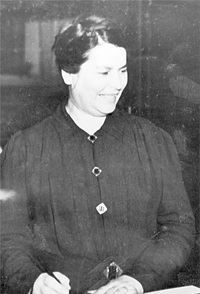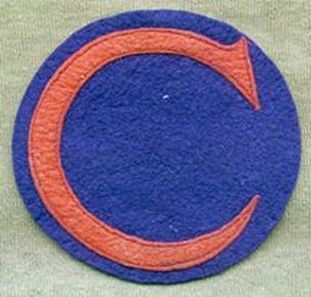Firecrafter: The Beginning (The Founding Fathers, Emblems, and First Members)
In 1920, in the heart of the Central Indiana Council, Camp Chank-Tun-Un-Gi, a program was established to inspire the interests of young Scouts and emphasize camping and Scouting skills. It was a program that would help to bring out that spirit in every boy who participated. Through the efforts of two men, the Scout Executive, Francis O. Belzer and his Assistant, Stanley L. Norton, a camp rank system known today as Firecrafter was created.

The idea of this new camp rank system arose out of a similar system employed at the Culver Woodcraft Camp of Dan Beard, the famous outdoorsman and early Scouter, whom Belzer knew and visited often over a period of many years. Belzer served as an instructor there in 1917. Beard rewarded his campers' achievements with a series of three ranks: Notcher (bronze), Midnotcher (silver), and Topnotcher (gold), each symbolized by a patch of appropriate color having a beaver within a stylized "C" for Culver. Belzer was impressed by Beard's methods and decided that a system of awards was needed at Chank-Tun-Un-Gi, not only to inspire interest in camping activities, but also to shift the emphasis from athletics to Scouting skills. During the winter of 1919-20 with the help of Stanley L. Norton, Scoutmaster of Troop 20 and newly employed Assistant Executive, he formulated the camp rank system to offer this recognition. With remarkable foresight, he structured the system to provide a continuing source of service to improve the physical facilities of the camp. The discussions of Belzer and Norton led to the introduction of three ranks, Camper, Woodsman, and Firecrafter in 1920. The third rank's name "Firecrafter" was coined during the winter of 1920-21. It was first published in 1921. Knowing the tastes and interests of Scouting-age boys, the founders made the new third rank both a challenge and a mystery.
The first Firecrafter ceremony took place at Camp Chank-Tun-Un-Gi on a summer Friday night on June 25th, 1920. At the close of the first camping period (June 14-26), the customary awards campfire was held in the camp arena. Among those expecting to be recognized were four Woodsmen, Louis Booth (T46), Robert Effroymson (T46), Paxton Unger (T46), and Stanley Gray (T21), who had completed all of the requirements for the new third rank. They waited through the campfire without being called, and as its closing minutes came near, they began to think they had been forgotten. Finally, just before the Scoutmaster's benediction, Assistant Executive Norton instructed the candidates to remain in the arena after the close of the campfire. And so the bewildered Woodsmen waited anxiously while the other Scouts, Scouters, and parents drifted away. When they were at last alone facing the dying embers of the campfire, they were put to the Unknown Test and became the first of over ten thousand Scouts to become Firecrafters. The ceremony was conducted by Belzer, Norton, Rexford Pruitt, Scoutmaster of Troop 46, and Ernest (P.D.) Hoelscher, the camp physical director.
In looking back over that first brief ceremony, the four founding Scouters realized that the full possibilities of the third camp rank had not yet been worked out; but they lost no time in completing the job. Before the end of the next camping period of 1920, they had collaborated on a ritual, which is still the basis of the Hill Ceremony today, drawing heavily on the writings of Ernest Thompson Seaton for the three fires and the Story of the Fire. In 1920, a total of ten Scouts and three Scouters sealed their membership as Firecrafters.
In addition to the first four youth of the first camping period, Henry Marsh and Eugene Reid of Troop 46 became Firecrafters during the second camping period. In the third camping period, Alfred Franklin, Troop 2 and Carl Ledbetter, Troop 59. Finally in the fourth camping period, George Loucks and Owen Burton of Troop 32 became members. It should also be noted that the founding leaders F.O. Belzer, Stanley L. Norton, and Rexford M. Pruitt were named Firecrafters during the first season. The fourth adult at the first Hill, Ernest S. (P.D.) Hoelscher of Troop 46 became the second 'Honorary' adult Firecrafter in 1922. The first was Frank W. Hawkins of Troop 46, 1921.
The camp rank emblems were also designed by Belzer, starting with the Culver "C" for the Camper rank. The original patches were cut from felt and hand-sewn by 'Aunt Stella' Doeppers, who worked at the Council office. In the early days, when a Scout became a Camper, he received a khaki vest with the Camper "C" emblem sewn on it. When he became Woodsman, a yellow teepee was added to the original patch. When he became a Firecrafter, he received a whole new patch including the red fire. The kahki vests were worn over the Scout uniform at campfires.
|
|
|
Aunt Stella Camper Patch Woodsman Patch
Original 1920-1921 Requirements
| Second Rank- (Woodsman) Requirements | Third Rank - (Firecrafter) - Requirements | Fourth Rank - (Minisino) - Requirements |
Firecrafter is a 501(c)3 non-profit organization.
Copyright © 2018 | www.Firecrafter.org | Crossroads of America Council | Boy Scouts of America




